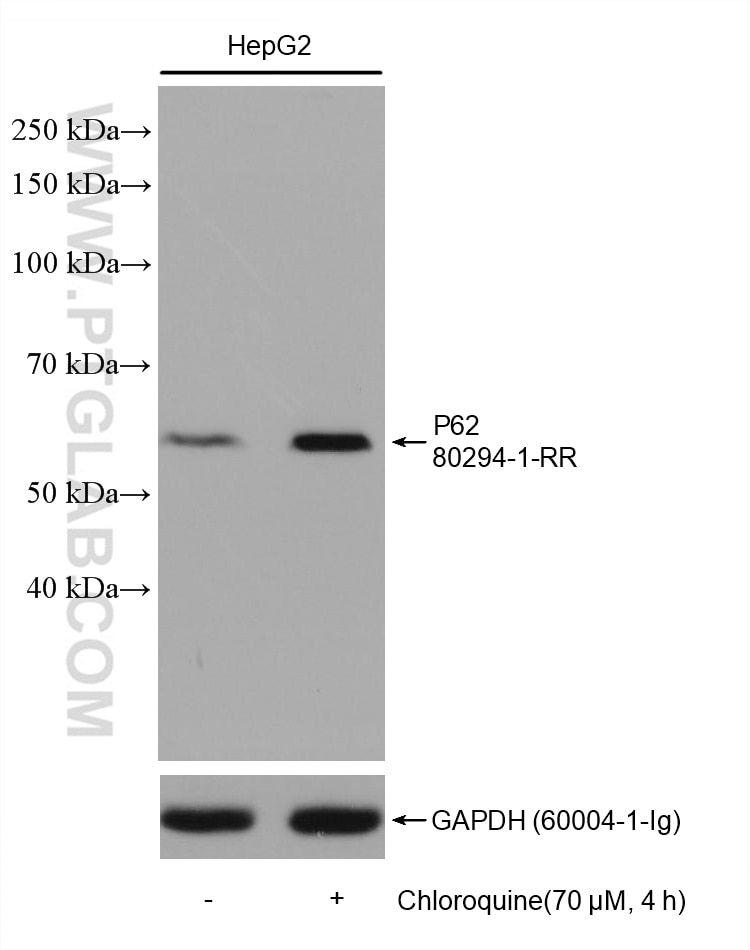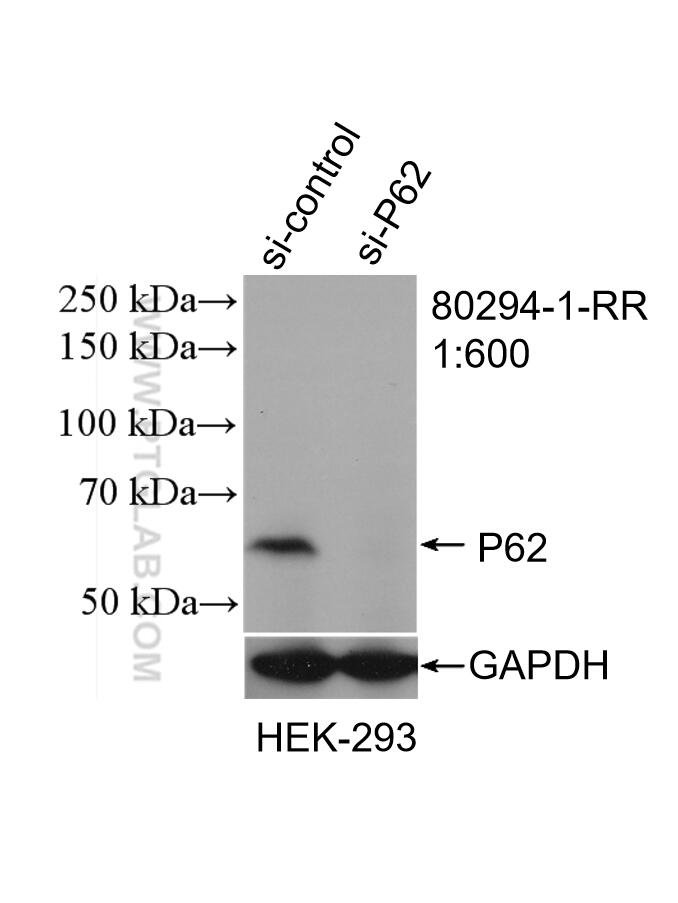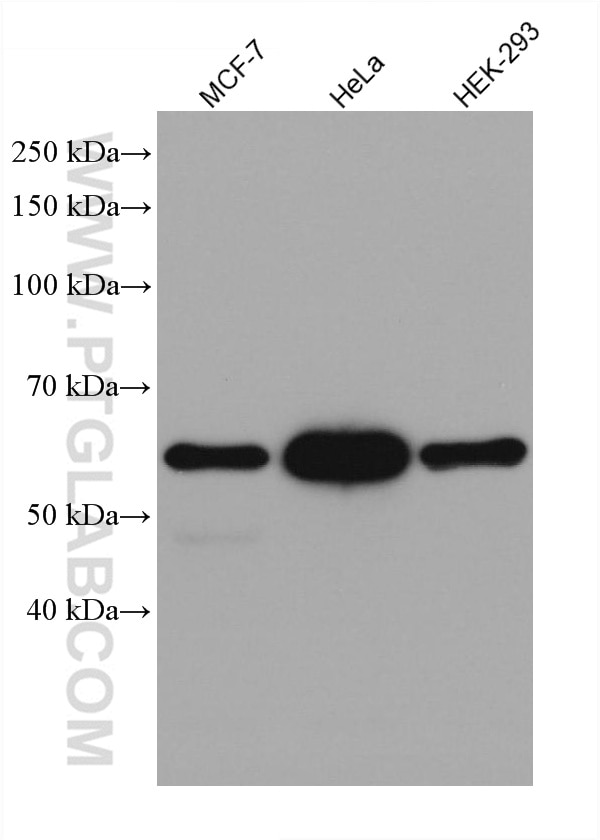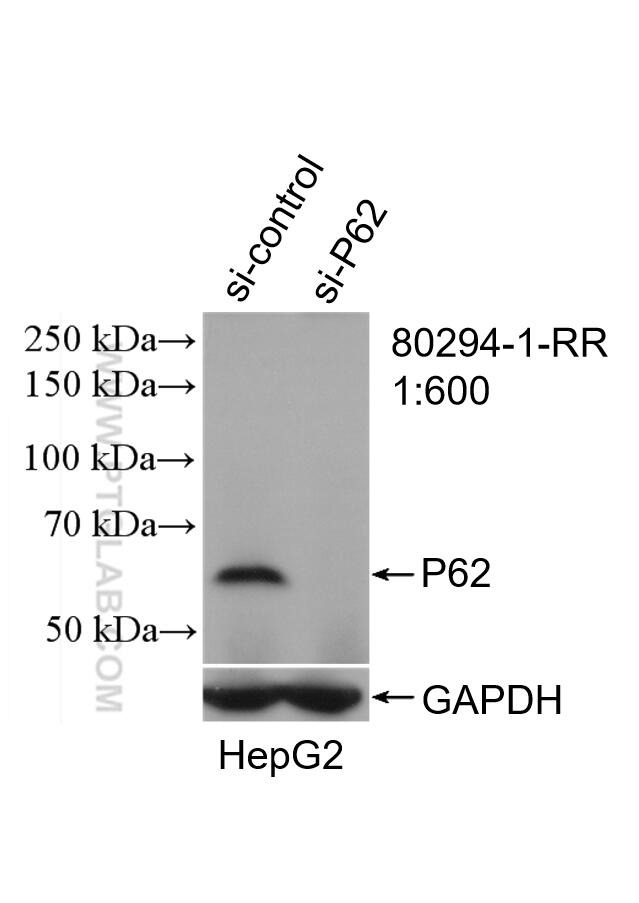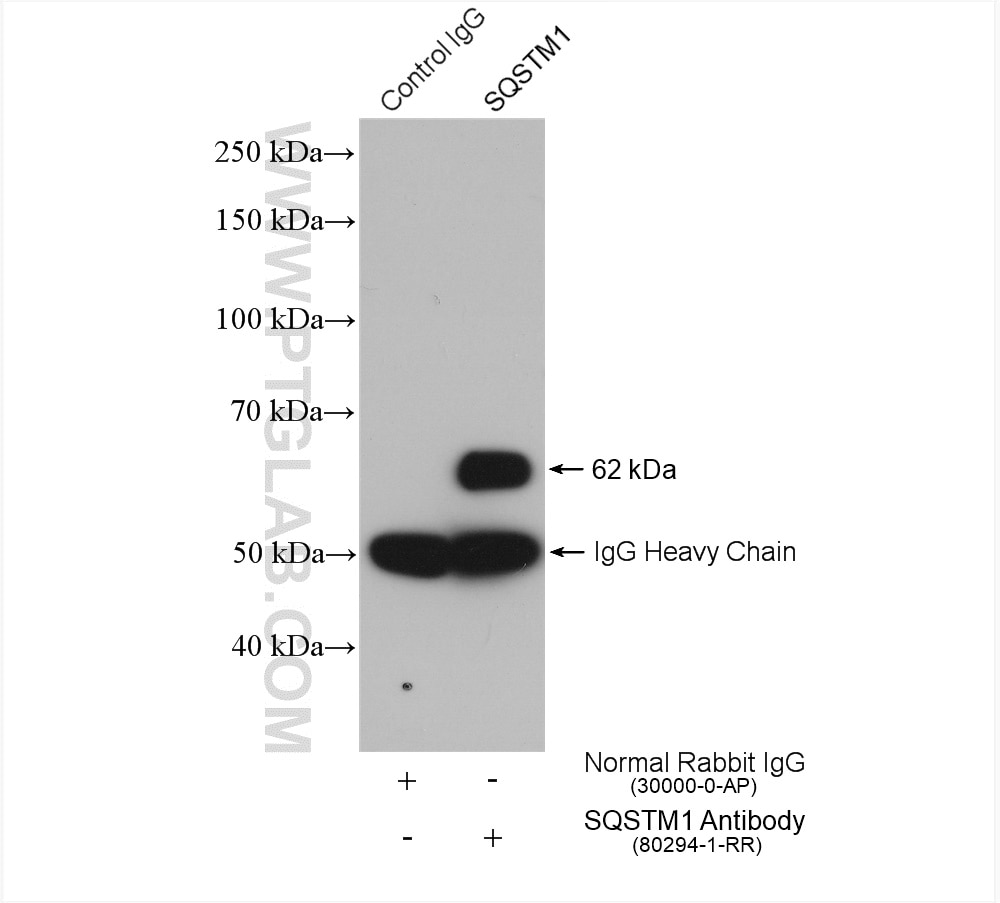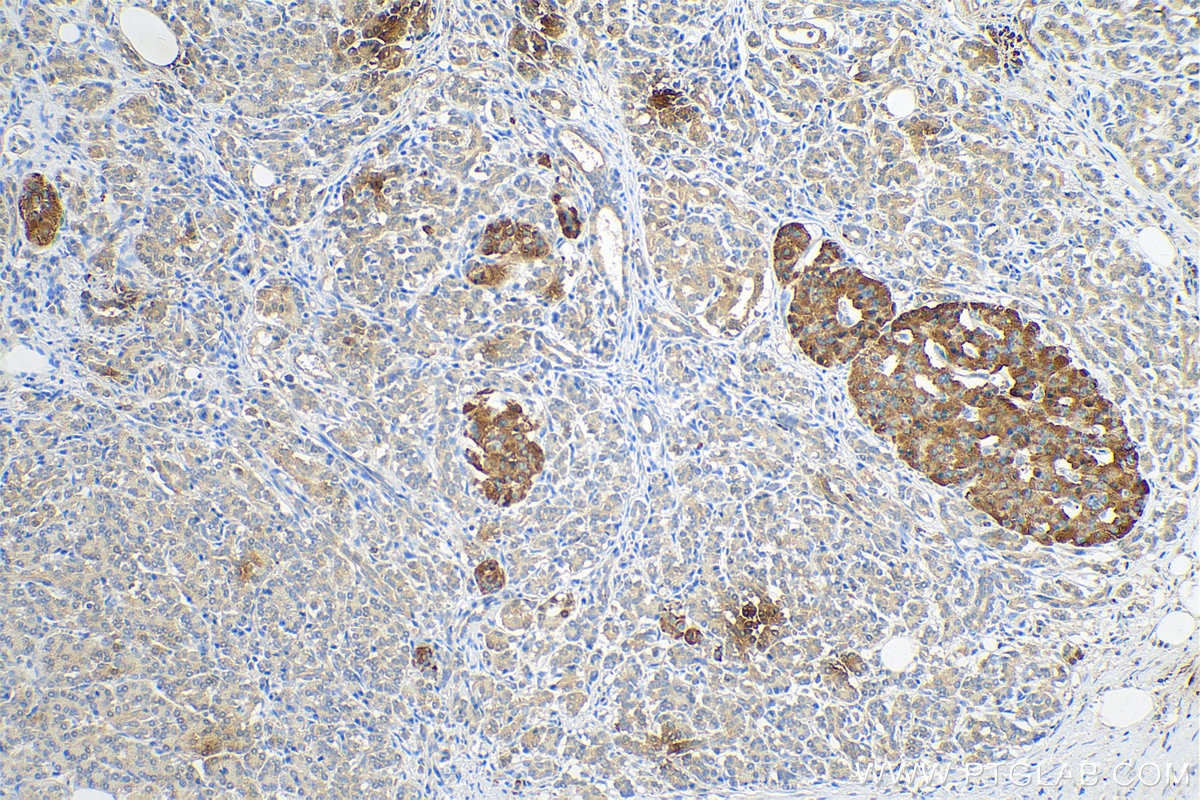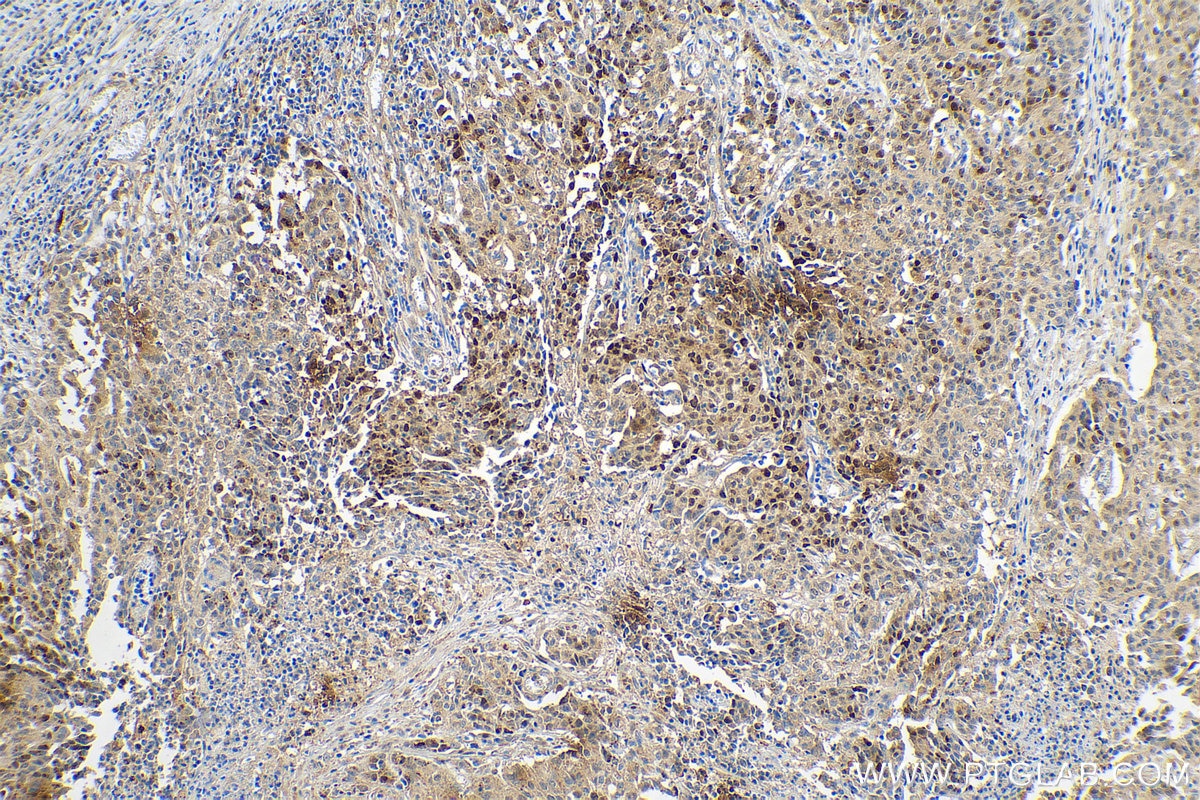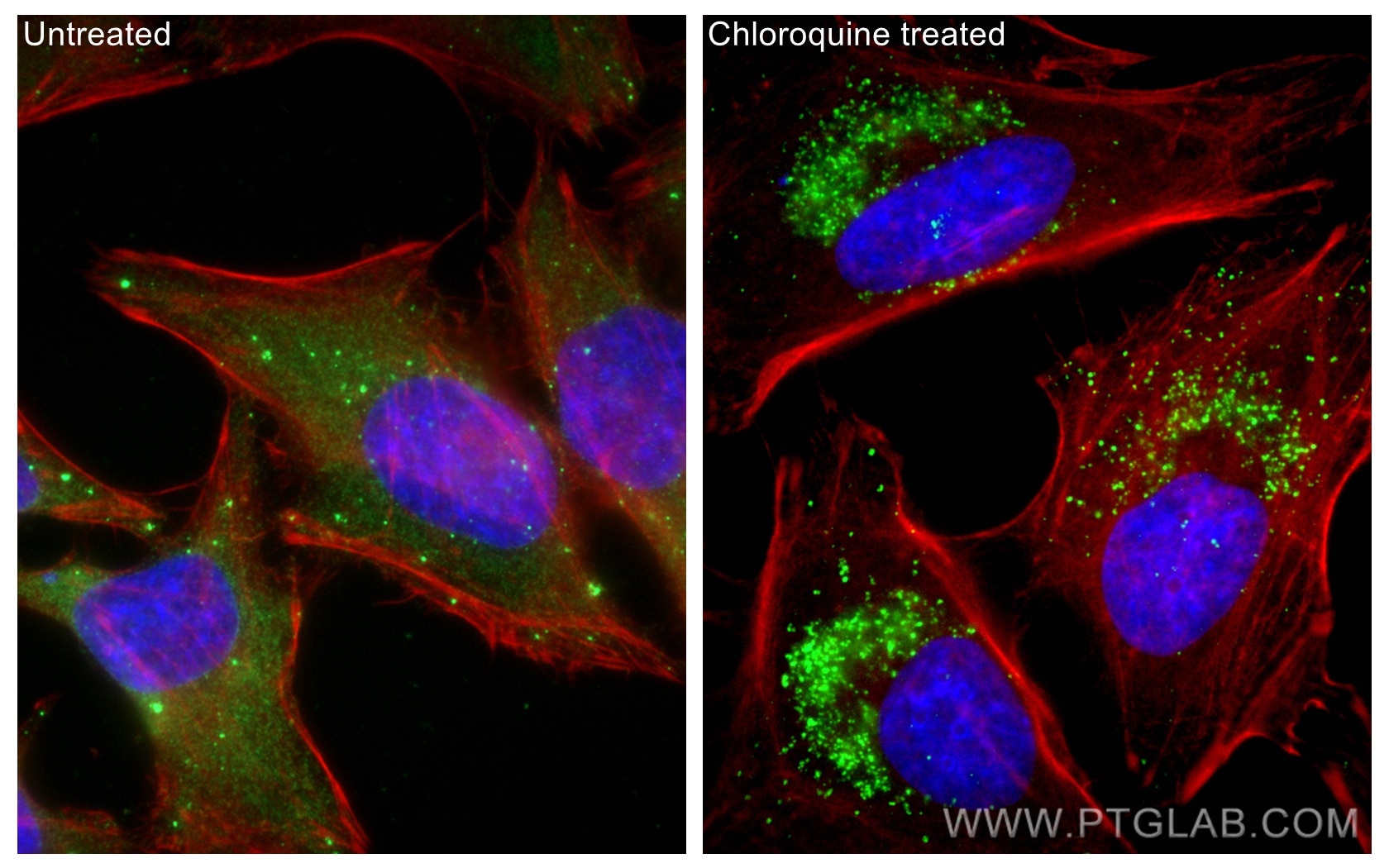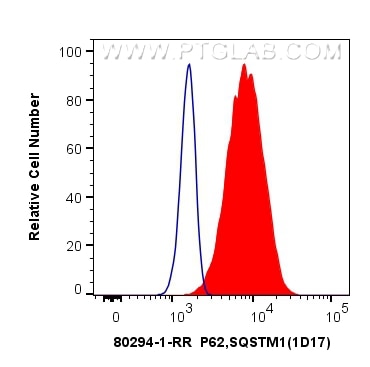- Featured Product
- KD/KO Validated
P62,SQSTM1 Rekombinanter Antikörper
P62,SQSTM1 Rekombinant Antikörper für WB, IHC, IF/ICC, FC (Intra), IP, ELISA
Wirt / Isotyp
Kaninchen / IgG
Getestete Reaktivität
human
Anwendung
WB, IHC, IF/ICC, FC (Intra), IP, CoIP, ELISA
Konjugation
Unkonjugiert
CloneNo.
1D17
Kat-Nr. : 80294-1-RR
Synonyme
Geprüfte Anwendungen
| Erfolgreiche Detektion in WB | HepG2-Zellen, HEK-293-Zellen, HeLa-Zellen, MCF-7-Zellen |
| Erfolgreiche IP | HEK-293-Zellen |
| Erfolgreiche Detektion in IHC | humanes Pankreaskarzinomgewebe, humanes Magenkrebsgewebe Hinweis: Antigendemaskierung mit TE-Puffer pH 9,0 empfohlen. (*) Wahlweise kann die Antigendemaskierung auch mit Citratpuffer pH 6,0 erfolgen. |
| Erfolgreiche Detektion in IF/ICC | mit Chloroquin behandelte HeLa-Zellen |
| Erfolgreiche Detektion in FC (Intra) | Jurkat-Zellen |
Empfohlene Verdünnung
| Anwendung | Verdünnung |
|---|---|
| Western Blot (WB) | WB : 1:2000-1:10000 |
| Immunpräzipitation (IP) | IP : 0.5-4.0 ug for 1.0-3.0 mg of total protein lysate |
| Immunhistochemie (IHC) | IHC : 1:50-1:500 |
| Immunfluoreszenz (IF)/ICC | IF/ICC : 1:250-1:1000 |
| Durchflusszytometrie (FC) (INTRA) | FC (INTRA) : 0.40 ug per 10^6 cells in a 100 µl suspension |
| It is recommended that this reagent should be titrated in each testing system to obtain optimal results. | |
| Sample-dependent, check data in validation data gallery | |
Veröffentlichte Anwendungen
| WB | See 4 publications below |
| CoIP | See 1 publications below |
Produktinformation
80294-1-RR bindet in WB, IHC, IF/ICC, FC (Intra), IP, CoIP, ELISA P62,SQSTM1 und zeigt Reaktivität mit human
| Getestete Reaktivität | human |
| In Publikationen genannte Reaktivität | human |
| Wirt / Isotyp | Kaninchen / IgG |
| Klonalität | Rekombinant |
| Typ | Antikörper |
| Immunogen | P62,SQSTM1 fusion protein Ag13131 |
| Vollständiger Name | sequestosome 1 |
| Berechnetes Molekulargewicht | 48 kDa |
| Beobachtetes Molekulargewicht | 62 kDa |
| GenBank-Zugangsnummer | BC017222 |
| Gene symbol | P62/SQSTM1 |
| Gene ID (NCBI) | 8878 |
| Konjugation | Unkonjugiert |
| Form | Liquid |
| Reinigungsmethode | Protein-A-Reinigung |
| Lagerungspuffer | PBS with 0.02% sodium azide and 50% glycerol |
| Lagerungsbedingungen | Bei -20°C lagern. Nach dem Versand ein Jahr lang stabil Aliquotieren ist bei -20oC Lagerung nicht notwendig. 20ul Größen enthalten 0,1% BSA. |
Hintergrundinformationen
Sequestosome 1 (SQSTM1/p62) is a multifunctional adaptor protein implicated in selective autophagy, cell signaling pathways, and tumorigenesis. p62 has been implicated in shuttling ubiquitinated and aggregated proteins for autophagic degradation. p62 is degraded during the autophagic process, which makes its intracellular level a marker for autophagy progression. p62 is at the cross-roads of several signaling pathways including Ras/ Raf/ MAPK and NFκB and plays important role in cancer. p62 is a component of inclusion bodies/ protein aggregates found in human diseases, including Huntington's disease, Alzheimer's disease, Parkinson's disease, and nephropathic cystinosis (PMID: 22074114, 22860231, 22714671).
Protokolle
| PRODUKTSPEZIFISCHE PROTOKOLLE | |
|---|---|
| WB protocol for P62,SQSTM1 antibody 80294-1-RR | Protokoll herunterladen |
| IHC protocol for P62,SQSTM1 antibody 80294-1-RR | Protokoll herunterladenl |
| IF protocol for P62,SQSTM1 antibody 80294-1-RR | Protokoll herunterladen |
| IP protocol for P62,SQSTM1 antibody 80294-1-RR | Protokoll herunterladen |
| STANDARD-PROTOKOLLE | |
|---|---|
| Klicken Sie hier, um unsere Standardprotokolle anzuzeigen |
Publikationen
| Species | Application | Title |
|---|---|---|
Front Pharmacol Inhibition of NNMT enhances drug sensitivity in lung cancer cells through mediation of autophagy | ||
Oncogene Suppression of lysosome metabolism-meditated GARP/TGF-β1 complexes specifically depletes regulatory T cells to inhibit breast cancer metastasis | ||
Cell Oncol (Dordr) RAB37 suppresses the EMT, migration and invasion of gastric cancer cells by mediating autophagic degradation of β-catenin |
